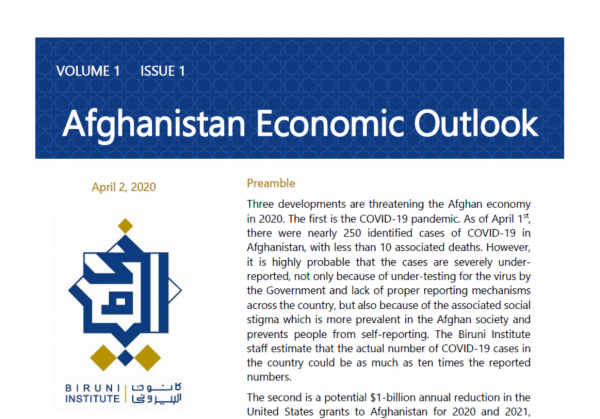Three developments are threatening the Afghan economy in 2020. The first is the COVID-19 pandemic. As of April 1st, there were nearly 250 identified cases of COVID-19 in Afghanistan, with less than 10 associated deaths. However, it is highly probable that the cases are severely under-reported, not only because of under-testing for the virus by the Government and lack of proper reporting mechanisms across the country, but also because of the associated social stigma which is more prevalent in the Afghan society and prevents people from self-reporting. The Biruni Institute staff estimate that the actual number of COVID-19 cases in the country could be as much as ten times the reported numbers.
The second is a potential $1-billion annual reduction in the United States grants to Afghanistan for 2020 and 2021, announced in a statement that was released by the US Department of State on March 23rd. Subsequently, the President Ashraf Ghani, announced the introduction of austerity measures and adjustments of up to US$ 1 billion in the FY2020 budget.
The third is the on-going political impasse caused by the disputes over 2019 presidential election results given allegations of fraud in the elections. Political analysts point towards risks of a political turmoil if a resolution is not reached.
This issue of the AEO provides estimates for the impacts of COVID-19 epidemic and fiscal austerity of $1 billion in response to US aid reduction on economic growth, inflation, fiscal stability, poverty, and unemployment in Afghanistan. All estimates and forecasts assume, however, that a peaceful resolution between the presidential claimants is reached, and that armed conflict by the Taliban movement is minimized.



